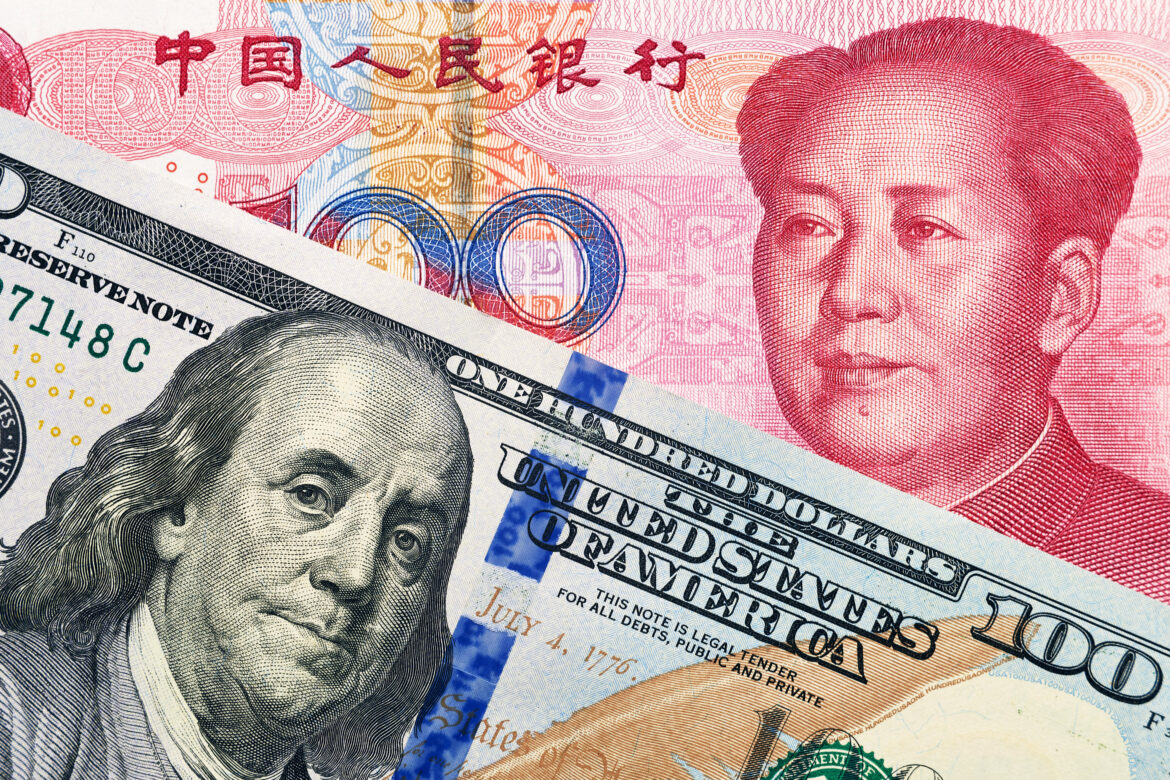Gold has all the potential to go unprecedentedly high. But silver will be gold on
Site:
Precious metals news
Gold and silver drifted lower this week, before a modest recovery this morning which can be put down to bear closing. In European trading this morning, gold was $1918, unchanged from last Friday’s close after testing the $1900 level yesterday. Silver was $23.05, down 3 cents, after testing $22.30. Comex volumes in gold were moderately healthy, and they picked up in silver yesterday on the sell-off.The performance of gold and silver has been disappointing for dollar bulls, but looking at it from the bears’ point of view prices refused to go lower yesterday when the ECB raised its deposit rates and the dollar’s TWI powered ahead. The TWI is next.Perhaps the bears need a little more time. Their hopes will devolve on interest rates and bond yields going higher or at least remaining firm, which is seen to be bearish for gold. The short positions of the Swaps on Comex have reduced in value, but probably not enough. The next chart is of their net position, and it can be seen...
 Global Hedge Fund Leader Citadel's Ken Griffin: The Fed is in a No-Win Situation
Global Hedge Fund Leader Citadel's Ken Griffin: The Fed is in a No-Win SituationSep 15, 2023 - 07:23:11 PDT
Griffin highlighted the U.S. government's continued reliance on significant fiscal deficits to boost the economy, foreseeing increased future fiscal burdens. The White House is still throwing money at stimulating the economy. This approach places Fed Chairman Powell in a no-win situation. The projected U.S. fiscal deficit was 3% of GDP for the year, but it now approaches 6%. With forecasts suggesting a near 5% deficit in coming years, market jitters are increasing due to the unsustainable nature of such deficits. Griffin suggests that these economic challenges will negatively impact the stock market.
 US Bond Market Hasn’t Flashed Recession Warnings So Consistently for So Long in at Least Six Decades
US Bond Market Hasn’t Flashed Recession Warnings So Consistently for So Long in at Least Six DecadesSep 15, 2023 - 06:56:57 PDT
Despite growing confidence in Wall Street and Washington that the Federal Reserve can stabilize the economy, the Treasury market tells another story. For 212 consecutive days, 10-year yields have remained below 3-month yields, a pattern which has historically preceded the last eight recessions. On Thursday, this trend broke a record from 1980, marking the longest such stretch since Bloomberg began tracking in 1962. This contrasts starkly with the resilience of the economy, highlighting the uncertainty since the Fed's aggressive rate increases in March 2022.
 Billionaire Ray Dalio Sounds the Alarm on US Debt, Says Bonds Are Not a Good Long-Term Investment
Billionaire Ray Dalio Sounds the Alarm on US Debt, Says Bonds Are Not a Good Long-Term InvestmentSep 15, 2023 - 06:20:22 PDT
Billionaire investor Ray Dalio warned of potential issues in the global bond market, emphasizing the oversaturation of US debt. He highlighted that the US must offload large amounts of bonds due to soaring federal deficits, creating a worldwide concern. If bonds don't offer sufficient real interest rates, investors might sell them, leading to rising interest rates. Dalio believes long-term bonds aren't a wise investment. With $7.6 trillion in US debt maturing within a year, the cost of debt servicing could further increase rates.
 Grocery Chain Introduces 'Shrinkflation' Labels to Shame Supplier Pricing
Grocery Chain Introduces 'Shrinkflation' Labels to Shame Supplier PricingSep 15, 2023 - 06:13:09 PDT
French grocery chain, Carrefour, has labeled products that shrunk in size but increased in price, spotlighting suppliers who raised costs despite stable raw material prices. This "shrinkflation" tactic, which is more prevalent in inflationary periods, was applied to items like Pepsi, Lipton Iced Tea, and Lindt chocolates. Carrefour's move intends to urge manufacturers to reevaluate their pricing strategies, especially as brand negotiations with retailers are imminent.
Oil prices are nearing their highest level this year, with the potential to reach $100 per barrel soon, due to tightening supply. Brent crude futures traded at $93.90, while U.S. West Texas Intermediate futures stood at $90.41. These surges are largely attributed to decisions by Saudi Arabia and Russia to cut oil production through the end of the year, leading to significant global inventory drawdowns and added inflationary pressures.
 13,000 Workers on Strike at All 3 Detroit Auto Makers for the First Time in Union’s History
13,000 Workers on Strike at All 3 Detroit Auto Makers for the First Time in Union’s HistorySep 15, 2023 - 06:00:53 PDT
Around 13,000 U.S. auto workers went on strike after failing to reach an agreement on union demands with Detroit’s three major automakers. For the first time in its 88-year history, the United Auto Workers union simultaneously walked out on General Motors, Ford, and Stellantis. This strike comes at a critical juncture for the U.S. auto industry, which is transitioning to electric vehicles, signaling major challenges for the sector's future.
The economy is in a slow burn. You can't even see the flames. But you can smell whiffs of smoke every now and then if you're paying attention. In this episode of the Friday Gold Wrap, host Mike Maharrey calls attention to that smoke with a breakdown of August's CPI and some other data that came out this week. He also busts a myth about silver.
 HEADING TO MAJOR NON-LINEAR FINANCIAL & GOLD MARKET EVENTS: Global Gold Bar-Coin, Central Bank & Net ETF Demand
HEADING TO MAJOR NON-LINEAR FINANCIAL & GOLD MARKET EVENTS: Global Gold Bar-Coin, Central Bank & Net ETF DemandSeptember 15, 2023
Investors are totally unprepared for the coming Major Non-Linear Financial & Economic events because they continue to listen to analysts who focus on a BUSINESS AS USUAL WORLD. Unfortunately, those days are over, especially when we see the massive debt being used to prop up the system...
Famed Author and investor Robert Kiyosaki highlighted on X that silver remains the "Biggest Investment Bargain," Still trading 50% below its all-time high and being crucial for the green revolution in solar and EVs. Esteemed for its inherent value, silver, like other precious metals, offers an age-old protection against inflation, outshining fiat money that central banks can print limitlessly.
China's gold is trading at a record premium due to Beijing's efforts to defend its weakening currency. This premium, over US$120 an ounce, is the highest in over two decades, reflecting the strength of gold amidst economic instability. The central bank's intervention strategies, including limiting gold imports, highlight the metal's significance. As global investors observe China's currency struggles, they are increasingly turning to gold
Argentina experienced a shocking inflation rate of 124.4% in August, the highest since 1991, leading to widespread hardship. Daily, consumers scramble to find affordable options amid drastically varying prices. With monthly inflation at 12.4%, poverty rates have surged beyond 40%, fueling discontent globally. Such economic instability serves as a stark warning for countries worldwide.
 US National Debt Is Now up a Massive $1.5 Trillion Since the Debt Ceiling “Crisis”
US National Debt Is Now up a Massive $1.5 Trillion Since the Debt Ceiling “Crisis”Sep 14, 2023 - 11:53:38 PDT
n the past three months, the US has seen an average monthly increase of $500 billion to its national debt. Over the last five years, there's been a 54% rise in US debt. As of now, the year-to-date interest expense has exceeded $800 billion. These numbers are so large it’s hard to believe.
The expiration of U.S. pandemic-era programs in 2021 resulted in a sharp increase in poverty in 2022, with inflation exacerbating the situation. The child poverty rate doubled to 12.4%, and the overall rate rose to 12.4% from the previous year. This uptick was largely due to the cessation of stimulus payments and enhanced child tax credits. Experts highlight the need for political action to address escalating inequality.
When the precious metals bull market arrives history suggests silver has more upside potential than just about any other asset...
In March 2023, I highlighted the link between high inflation and subsequent unemployment. Historical data suggests a two-year lag between inflation peaks and unemployment surges. With a 9.1% inflation peak in June 2022, we might expect rising unemployment by June 2024. The recent 3.7% CPI increase warns of more employment challenges around 2025. Worryingly, the Federal Reserve's 2% inflation target, diverging from a 1978 Congressional mandate of zero, exacerbates the issue, pointing to a bleak job market future.
 Thanks To Ohio's Fraud Fix, Initial Jobless Claims Plunge to 12-Month Lows but Highest since 2022
Thanks To Ohio's Fraud Fix, Initial Jobless Claims Plunge to 12-Month Lows but Highest since 2022Sep 14, 2023 - 08:09:24 PDT
Jobless claims have alarmingly risen to 220k from 215k, despite Ohio's attempts to rectify its fraudulent filings. These efforts have only marginally reduced the national figure. Ohio, once plagued with the most significant fraudulent claims, now showcases a decline. However, continuing claims remain precariously close to the worrying 1.7MM mark. Goldman Sachs warns of seasonal distortions that could pull down continuing claims, potentially impacting 375k by September's end. The unemployment rate is ominously at its peak since February 2022.
Sep 14, 2023 - 07:29:19 PDT
Mortgage applications plummeted 0.8% in just a week, as per the Mortgage Bankers Association. Even after Labor Day adjustments, a concerning 12% slump was observed from the prior week. Refinancing took a nosedive by 5%, and the year-on-year data shows a startling 27% decline in purchase applications.
Russia and the Saudis are driving up oil and diesel prices. But these moves are likely to undermine the rouble more than they undermine the dollar, euro, and other major currencies. Therefore, higher energy prices will rebound on the Russians this winter: if they shiver in Germany, they will freeze in Russia. If the dollar is king of the fiats, the rouble is just a lowly serf.There is little doubt that Putin and his advisers are aware of this problem. Plan A was to introduce a new gold-backed BRICKS currency which might be expected to weaken the dollar and euro relative to the rouble. Plan B was more drastic: to back the rouble itself with gold. This is the financial equivalent of dropping a hydrogen bomb on the dollar and the global fiat currency system upon which it is based.As well as demonstrating why there is no option for Russia but to back her currency with gold, this article shows why it is perfectly possible for Russia to do so during wartime and explains how it c...
Real median household income dropped for the third year in 2022, with a significant inflation surge of 7.8%. Despite some positive economic indicators, many Americans feel financially strained under Biden's tenure. Critics argue excessive welfare spending contributed to the inflation spike. Current data, especially from Gross Domestic Income, hint at looming economic challenges.







